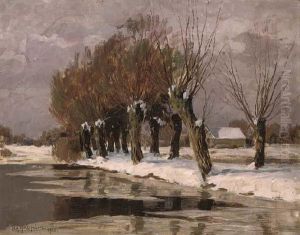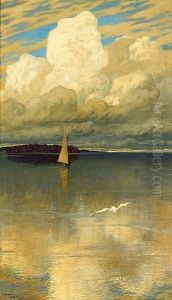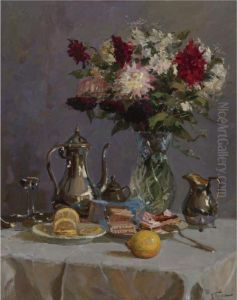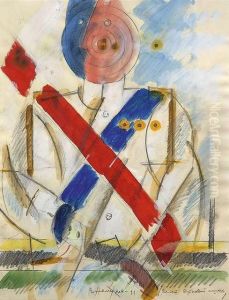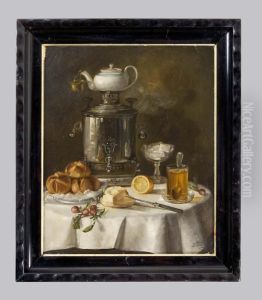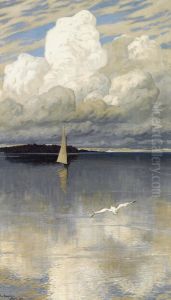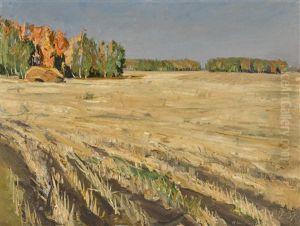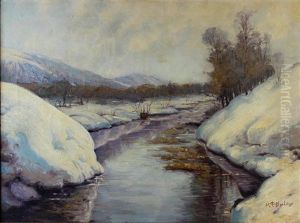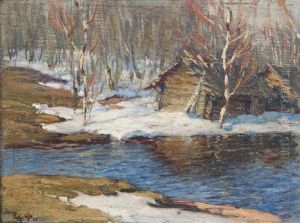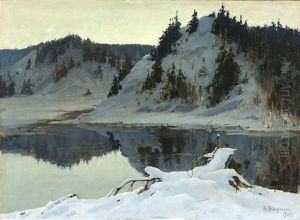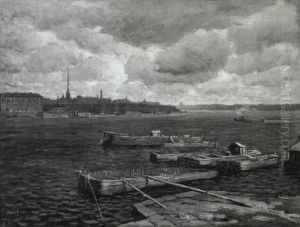Vladimir Nikolaevich Fedorovich Paintings
Vladimir Nikolaevich Fedorovich was a distinguished Russian and Soviet artist known for his unique contributions to the world of painting, stage design, and teaching. Born on May 17, 1878, in the Russian Empire, Fedorovich embarked on his artistic journey at a young age, navigating through the transformative periods of Russian art from the late 19th century through the Soviet era.
Initially, Fedorovich studied at the Kiev Art School, where he was influenced by the prevailing styles of the time, including Realism and the emerging currents of Modernism. His early works displayed a keen observation of life, nuanced use of color, and an interest in exploring the human condition. Seeking to broaden his horizons, he later moved to Saint Petersburg, where he continued his education at the Imperial Academy of Arts. This period was crucial for Fedorovich, as it exposed him to a wider array of artistic movements and techniques, which he would later incorporate into his own distinctive style.
As the political and social landscape of Russia underwent dramatic changes with the Bolshevik Revolution in 1917, Fedorovich's art also evolved. He became actively involved in the vibrant post-revolutionary art scene, contributing to both the development of Soviet art and the establishment of new artistic institutions. His commitment to art as a tool for education and social change aligned with the ideals of the new Soviet regime, which sought to use art as a means to shape the consciousness of its citizens.
During the 1920s and 1930s, Fedorovich's work reflected the principles of Constructivism and Socialist Realism, the latter becoming the official art style of the Soviet Union. He was particularly recognized for his powerful depictions of the Soviet people, industrial achievements, and scenes of everyday life, which were imbued with optimism and heroism. In addition to his paintings, Fedorovich made significant contributions to the world of theater, designing sets and costumes for numerous productions that echoed the revolutionary spirit of the times.
Beyond his artistic achievements, Fedorovich was a respected educator, teaching at various art institutions throughout his career. He played a pivotal role in nurturing the next generation of Soviet artists, imparting not only technical skills but also a sense of social responsibility through art. His legacy as a teacher is as significant as his contributions to Soviet art, embodying the belief in the power of art to inspire and transform society.
Vladimir Nikolaevich Fedorovich passed away on July 13, 1966, leaving behind a rich body of work that continues to be studied and admired. His art remains a testament to a period of great upheaval and transformation, capturing the essence of a society in transition with empathy, clarity, and conviction. Through his paintings, designs, and teaching, Fedorovich made an indelible mark on the art world, bridging the gap between the pre-revolutionary and Soviet eras and contributing to the cultural heritage of Russia and the Soviet Union.
